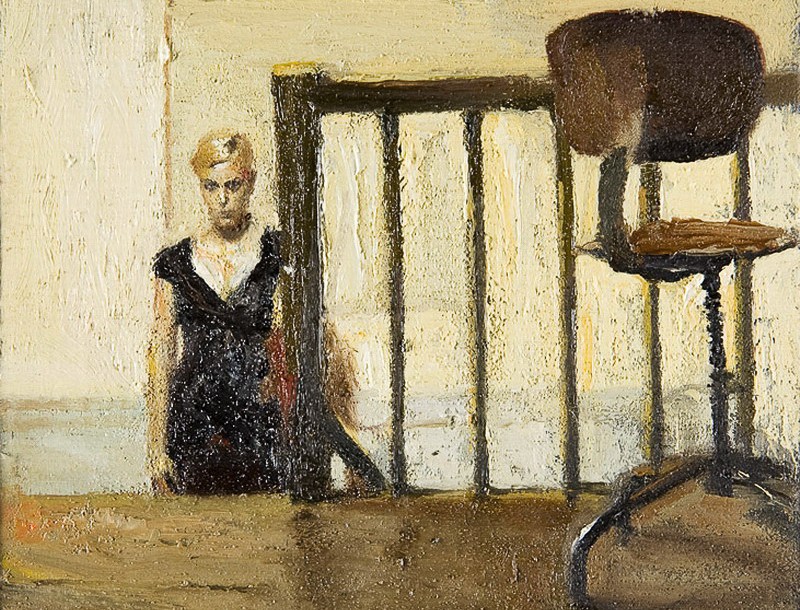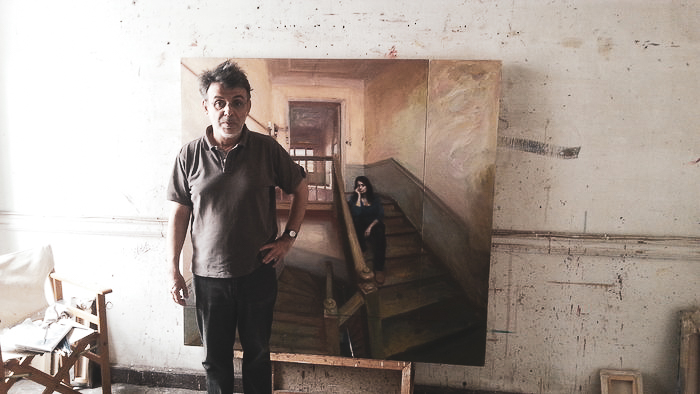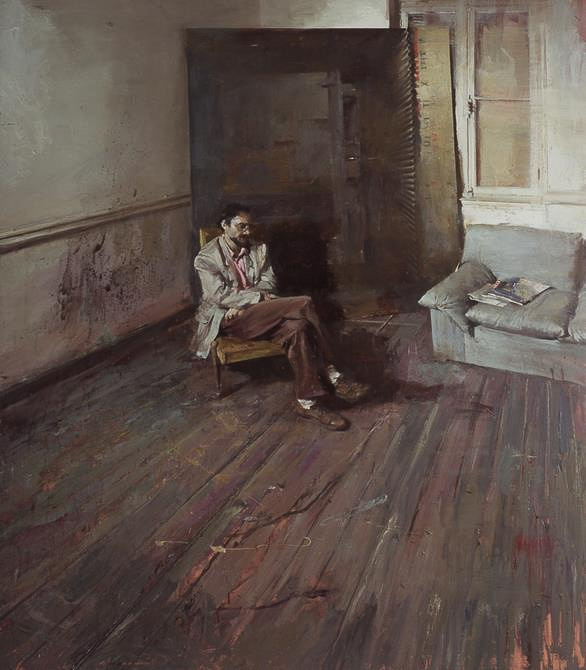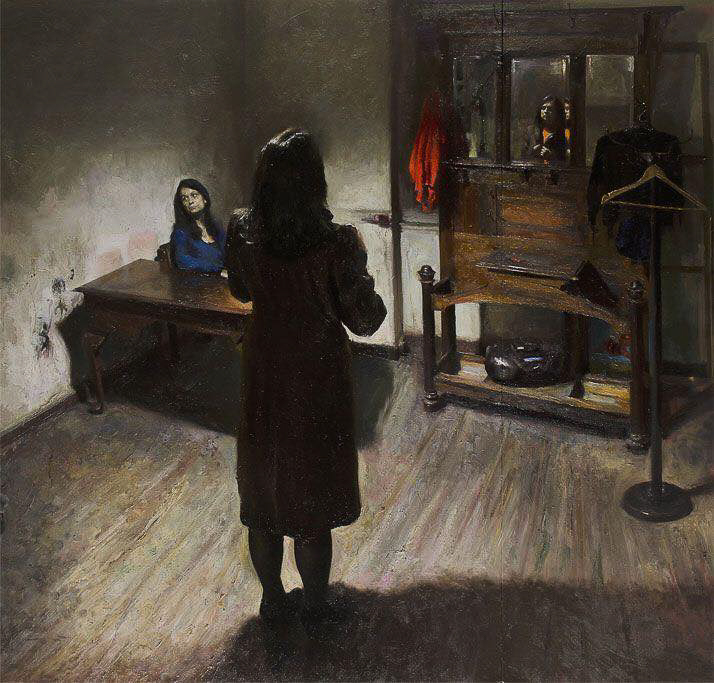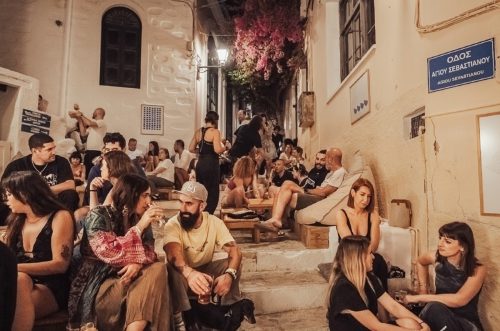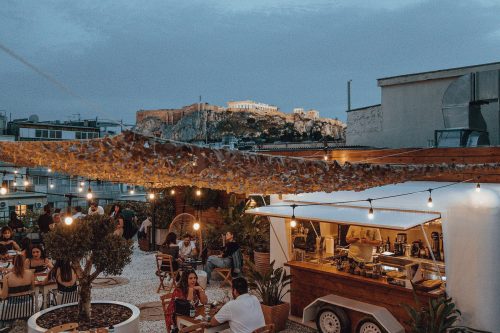“I want in 100 years for people to say…that was how women were then,” says one of Greece’s most prominent artists of our time, interviewed exclusively by IN+SIGHTS GREECE.
It’s Saturday afternoon on a hot July day in downtown Athens and I’m meeting George Rorris, arguably the most acclaimed contemporary Greek painter of his generation. As we settle into a corner table at the edge of the trees and grass bordering Mavili Square, I’m delighted by two examples he draws from our surroundings to explain what it means for him to manipulate paint on canvas. First, he explains that when an artist is confronted with a white canvas, he is limited by four lines, two vertical and two horizontal. This demands that the artist makes decisions – where to crop out backgrounds and to what extent.
“ If I were to paint your portrait now, would the painting include the trees behind you, the coffee shop across the street, the chair, and the street? Where would it start and stop?” he asks me.
Secondly, he tells me that his work is a process by which the paint is used freely. The actual ‘material’ (paint) plays a strong role in the end result. It begins by being used with free, uncalculated gestures, and is subsequently scraped off leaving traces that gradually create layers that build the image. This reverse technique, as opposed to simply adding paint, achieves a different sort of depth.
As he relays this to me, he points again to the grass and explains that in the same way one might build a house out of rocks and dirt in the garden, the initial process will be one that is messy. The digging and moving of dirt and rocks is a process of selection. This is how a painter constructs his work.
It strikes me that this parallel between the minutiae of daily life and his own artistic process is the very essence of his spirit- a wise, honest, realistic portrayal of the world around him in all its glorious and abrasive reality. Rorris has a particular style of work that is tinged with soulful melancholy yet still manages to stay relevant and contemporary. He is concerned with the real world inhabited by real people.
A visit to his studio last year confirmed that the “stage-set” or atelier where he paints lends a paradoxical air of mystery and grit to the works because the women ‘models’ he paints are often local women who come to pose for necessary supplemental income. They are neither supermodels nor princesses and they are depicted without adornments. Their portraits are made under the shuttered windows and bright projection lights that Rorris began using in the 1990s. He speaks about how his fascination with faces and portraits of all sorts began in admiration of the grandmasters such as Goya, Rembrandt, Courbet- but that he made a conscious decision to move away from the traditional dark background and lit up faces in classical portraiture.
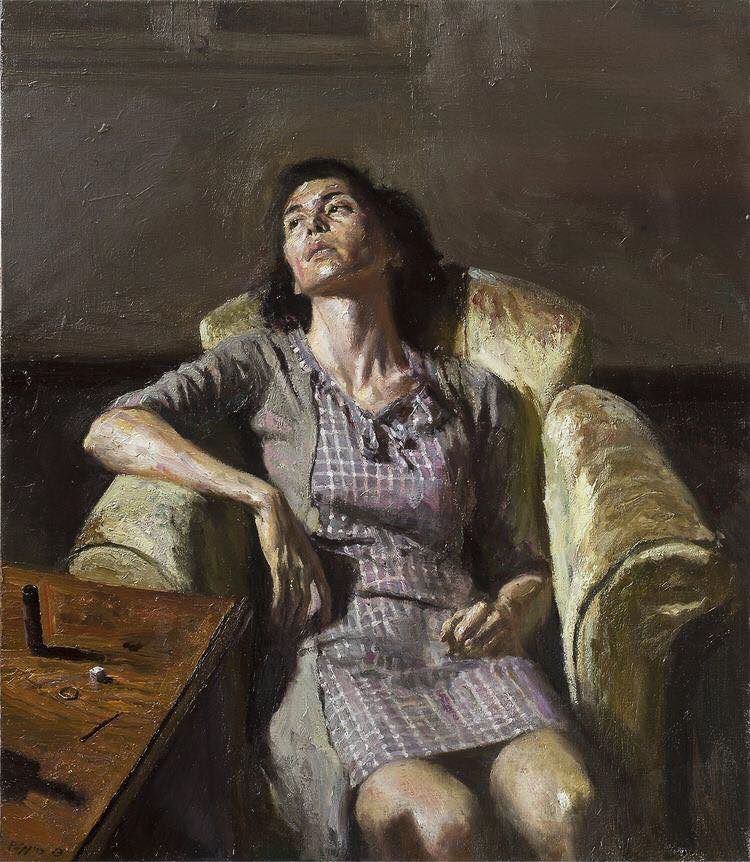
“We need to forget the past…Rembrandt, Bellini, Titian…now we will paint these people who are my people,” he says. I want in 100 years people to say…that was how women were then. If it happens that they have a tattoo or a piercing then it will be included.”
Rorris is creating his own contemporary vision based on solemn and sincere respect for 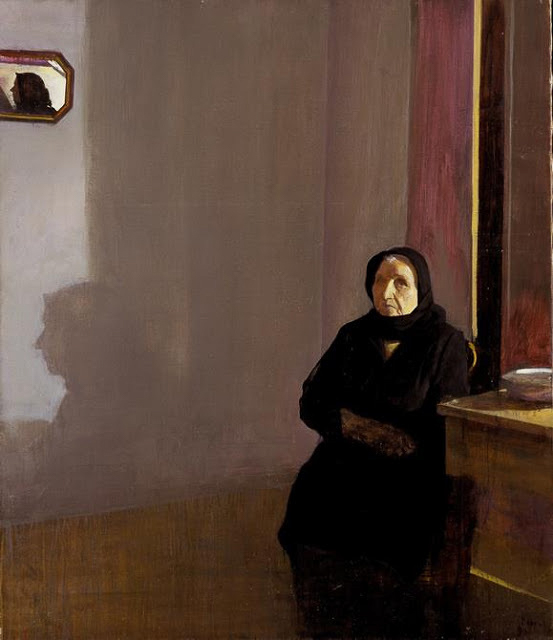
Rorris studied at the Athens School of Fine Arts under Panayotis Tetsis and Yannis Valavanidis and then was offered a State scholarship to the Ecole des Beaux-Arts in Paris where he studied in the studio of Leonardo Cremonini. He was represented by Medusa Gallery for many years until it closed, and his works belong to numerous museums and private collections. His career certainly holds many exciting chapters ahead of it and no doubt will continue to evolve and intrigue us.
As Francis Bacon once said of his own artwork, “I would like in my arbitrary way to bring one nearer to the actual human being.” George Rorris is doing just that in his painting, bringing us closer to our own humanity.

